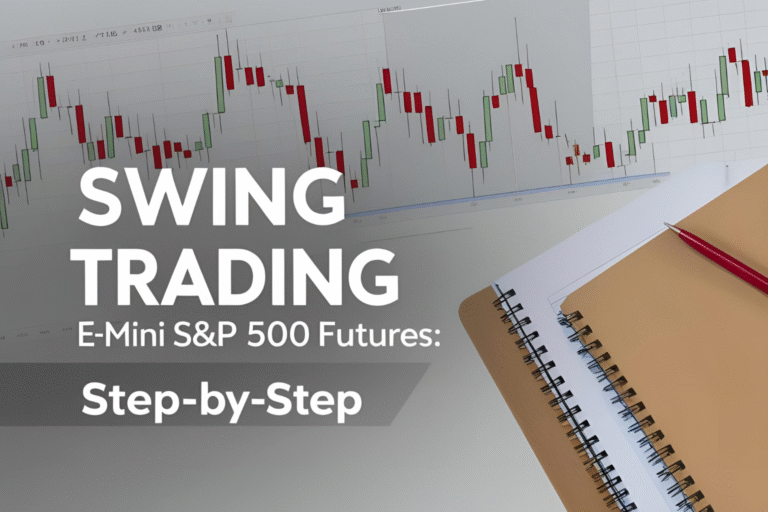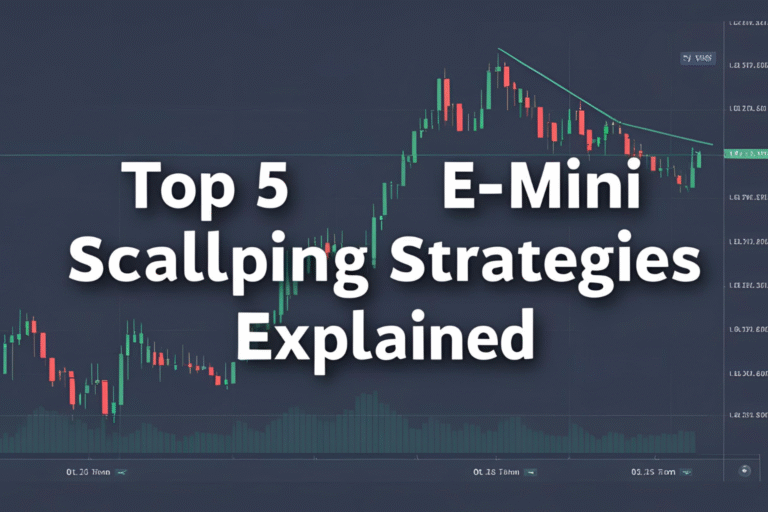Intraday vs Position Trading: Which Works Best for E-mini Futures?
As a beginner trader, one of your first decisions is choosing a trading style. Should you trade E-mini futures during the day and close positions quickly—or hold trades for days, even weeks?
This guide compares Intraday Trading and Position Trading in E-mini futures so that you can decide what suits your goals, time availability, and risk tolerance.
What Is Intraday Trading?
Intraday trading (also called day trading) means opening and closing all positions within the same trading day. No trades are carried overnight.
Pros:
- No overnight risk
- Fast results (profits/losses realized quickly)
- High trading frequency
Cons:
- Requires time and attention
- Emotionally intense
- Higher transaction costs due to multiple trades
What Is Position Trading?
Position trading involves holding trades for days, weeks, or even months, aiming to capture major price movements and long-term trends.
Pros:
- Requires less screen time
- Less affected by intraday volatility
- Easier to manage emotions
Cons:
- Exposed to overnight and weekend risks
- Larger stop-losses required
- May need more capital to hold during drawdowns
Key Comparison: Intraday vs Position Trading
| Factor | Intraday Trading | Position Trading |
|---|---|---|
| Holding Time | Minutes to hours | Days to weeks |
| Time Commitment | High (real-time monitoring) | Low (periodic checks) |
| Chart Timeframes | 1-min to 15-min | 4H to Daily/Weekly |
| Risk per Trade | Smaller | Larger |
| Margin Use | Lower during day | Higher overnight |
| Ideal For | Active traders | Part-time traders/investors |
Which Is Better for Indian Traders?
Intraday Trading:
Best if you can focus between 7:00 PM – 12:30 AM IST, when the U.S. market is active.
Use platforms like:
- NinjaTrader
- ThinkorSwim
- TradingView (for analysis)
Position Trading:
Better if you can’t stay up during U.S. market hours. Ideal for those with a full-time job or limited time.
Tools like:
- Daily or 4H charts
- Weekly email alerts or swing trade setups
- End-of-day (EOD) review routine
Examples for Both Styles
Intraday Setup:
- VWAP Reversion on 2-min chart
- Entry: Price bounces back toward VWAP
- Target: 4–6 points
- Stop-loss: 2 points
- Duration: 15–45 minutes
Position Trade Setup:
- MACD crossover on Daily chart
- Entry: Breakout above 50 EMA
- Target: 50–100 point move
- Stop-loss: 25–30 points
- Duration: 4–10 days
Capital Requirement Comparison
| Style | Minimum Capital (Micro E-mini) |
|---|---|
| Intraday | $1,000–$2,000 |
| Position | $2,500–$5,000+ (to handle drawdowns) |
Remember, E-mini (ES) requires more margin than Micro E-mini (MES).
Psychological Factors
| Trait | Intraday Traders | Position Traders |
|---|---|---|
| Patience | Less needed | Crucial |
| Discipline | Very important | Equally important |
| Stress Level | High (due to speed) | Moderate |
| Screen Time | Long hours | Short reviews |
Hybrid Approach (Swing + Intraday)
Some traders blend both methods:
- Intraday trade 1–2 days a week
- Position trade longer trends based on macro setups
This balance gives you flexibility without emotional overload.
Final Thoughts
There’s no one-size-fits-all approach when choosing between intraday and position trading in E-mini futures. The best path is based on:
- Your daily schedule
- Capital availability
- Risk tolerance
- Emotional discipline
If you’re in India and working full-time, position trading or swing trading might be easier to manage. If you enjoy the challenge of fast-paced decisions and can trade during U.S. hours, intraday trading could be a fit.
FAQs
Q1. Can I switch between intraday and position trading?
Yes. But test both styles in a demo environment first to find your comfort zone.
Q2. Which is riskier—intraday or position trading?
Intraday has frequent small risks; position trading carries larger overnight exposure. Risk management is key in both.
Q3. Do I need different platforms for each style?
No. Most platforms (like Interactive Brokers or NinjaTrader) support both.
Q4. Can I do intraday trading with Micro E-mini contracts?
Yes. Micro E-mini (MES) is perfect for practicing intraday setups with lower risk.
Q5. Is one style more profitable than the other?
Profitability depends on your strategy, discipline, and execution—not the style itself.



